Working Outside the Box
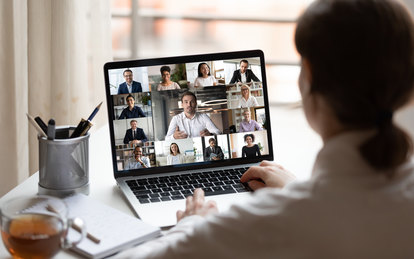
This article, authored by George Athens of SmithGroup, was previously published in Work Design Magazine.
We are in an unusual time marked by more than a little uncertainty about our future. Pondering the long-term impacts of the COVID-19 pandemic on our society, our economy and our profession can be overwhelming. Yet, times like this can also provide an opportunity to reflect on the paradigms and assumptions on which we base our work.
While many of the questions and responses raised by this pandemic can be confusing to sort through, they can broadly be grouped into two categories. First, given that a large segment of the workforce has been working from home for the past two months (or longer), companies will reevaluate remote work and the advance of the virtual space. We also find ourselves questioning the threat of future viruses as we assess the far-reaching impacts that COVID-19 has had on our way of life, our work, and the behaviors that comprise the two. Let’s begin by exploring the latter.
Will social distancing forever be engrained in our daily lives, or will it be a shorter-term phenomenon? If temporary, how long? The answer to this question is an important one, for society at large and, more specifically, for those of us engaged in professions devoted to designing, engineering and constructing places of human interaction. If social distancing is to remain a rule around which we build our social and creative interactions, this will have a profound impact on how we occupy space and how we work together moving forward.
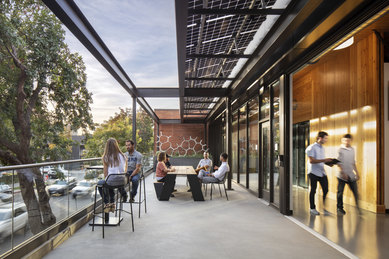
We have worked to support serendipitous interactions and now consider them an important part of a formula of work.
The environments we have created up until this pandemic—which were conceived to foster rich interactions and allow for a high level of choice and flexibility—will need to be rethought. Indeed, if the behaviors we have sought to support—those founded on fostering connectivity, collaboration and ease of interaction—are no longer foundational in our thinking of environments, it raises the question: “Why would we even bother to convene in one space at all?”
One could argue that this change in mindset could lead to the return of individual workspaces or enclosed offices supplemented by conference rooms, as in the past. I am not sure this works. In a world designed to facilitate social distancing, what does a conference room or any space designed for gathering and collaboration look like? One scenario could shift users back to individual spaces for day-to-day activities. Then, when teams need to collaborate or coordinate, we use virtual spaces to avoid close contact. This seems preferable to shouting across a room to one another which, in addition to being obtrusive and impersonal, could result in potentially aerosolizing a virus should anyone in the room be a carrier. If each of us is to work within our individual boxes and use virtual connections to share outputs, wouldn’t we each want the freedom to choose where we work? That is, why bother to gather within the same four walls if we cannot truly be together within those four walls?
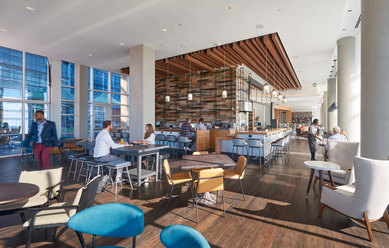
Work has been mobile for some time. It allows for much more flexibility in our daily lives and has become something we expect. Increasingly, we work and stay in touch with our coworkers and clients wherever we are. In a very real sense, these are work settings.
One conclusion we might draw is that the physical spaces we have been creating will no longer define how we work together. This does not seem a likely outcome. As humans we thrive on relationships and the physical presence of one another. Though many individuals have been surprised by their effectiveness working from home, I think the vast majority would describe it as surviving, not thriving. We need to find a way to return to our physical space and interact with one another.
This brings me to the second category of impacts: remote work and the advancement of the virtual space. Remote work has been on the rise for some time and is increasingly valued by employees. As workplace designers, we often tout offices that give employees choice. It’s all about choice, we say. Give the employee the choice to choose what type of space they need to do their best at any given time. This pandemic now gives immense credibility to the idea that, in addition to the choices offered in the office, choice can also now include our homes. Yes, there are policy, financial and technology implications that must be addressed at the company level, but I think it’s safe to say that the knowledge-worker community has answered the most basic question during this experience—remote work can be effective.
As designers, engineers and builders of physical spaces, no one would fault our industry for perceiving this as a threat. Contrarily, let’s ask the question: “Does this unique situation liberate us from outdated paradigms of physical space?” Should we reimagine the definitions of “work” and “the workplace” to design a better future for our clients? If we want to stay in the game, we need to think differently about the players. We also need to think differently about how we design places of work and the boxes within which we and our clients conduct work. Maybe the answer isn’t one box, but a number of boxes; some of which work together in and are controlled by our clients. Other boxes, while equally important, are outside of the direct control of our client organizations.
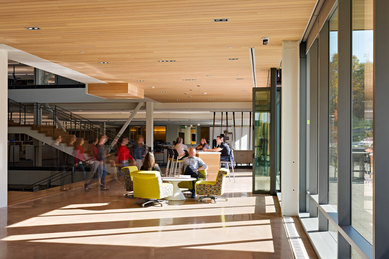
Biophilic science tells us that access to daylight and views improve human performance. Investing more in our buildings improves business outcomes. Should we invest more in less?
If this becomes our new paradigm moving forward, how will we advise our clients in this new world—where work is more fluid than ever? This model introduces new meaning to the physical spaces we design. By and large, these spaces and how we invest in them are a result, if not a vestige, of ways of thinking rooted in the industrial age, when real estate strategies focused on minimizing our investment in physical space.
At the same time, we are getting smarter. There is a large body of science that sheds light on an entirely new way of valuing this physical space and its impacts on human performance. Following this science allows us to leverage two important facts. The first is that 90% of operating costs for the average U.S. corporation are in one way or another associated with people: salaries, benefits, and absenteeism being the greatest contributors. The other 10% of costs reside in the real estate that house employees. This is the annual cost of rent or debt service plus operating costs. Considering the average individual spends 90% of his/her time indoors, with much of that time devoted to the environments in which we work, the sheer importance of that space must not be undervalued.
Connecting the Dots
If remote work does, in fact, continue to rise, that would mean that office utilization rates (the percentage of time a desk or workspace is in use) will go down. Most studies of utilization rates, including those conducted by SmithGroup, tell us that current utilization of a workspace ranges between 50% and 70%. If remote work leaves us with utilization rates of 50%, that suggests an opportunity to halve the cost of physical office spaces. But what about the long view? Is there a different opportunity here?
Science connecting human physiology and behavior to buildings and environments tells us that wisely increasing our investment in physical space will result in better outcomes for our clients. For instance, studies show that workplaces infused with daylight can result in a 6% increase in performance. Furthermore, increased ventilation rates can improve cognitive functions and performance of up to 8%. These numbers can be translated into direct financial benefits for organizations. The body of accumulated research available is of tremendous value to designers and companies alike. This science creates a new perspective and the ability to quantify the benefits of investment in the spaces we create. The Well Building and Fitwel standards were developed to help guide the creation of healthier buildings and environments, and each is underpinned by this science. Now we can all debate the perceived higher cost to invest in this new way of thinking, but let’s not let those costs undermine the root science. We can no longer choose to ignore studies that offer direct correlations between scientifically-backed design solutions and improvements in the health, well-being, engagement, and performance of a company’s largest investment – its people.
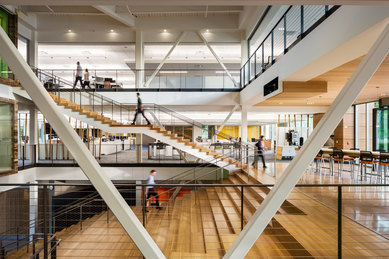
Standards such as the WELL Building Standard and Fitwel explain the importance of designing buildings and environments that nudge people into healthy behavior. These are all investments that leverage our client’s most valuable asset: their people. Does remote work allow our clients to invest more in less space for better outcomes for their people and their business?
If we agree with the ratio of operating costs cited earlier—9:1 people to real estate—then even a slight improvement in performance (even a few percentage points), can cover the total cost of providing accommodation for employees. This science of human physiology and behavior guides us toward that improvement. If we can wrap our heads around remote work being included as an employee choice while simultaneously creating better, healthier places of work, we can at once reduce our clients’ operating costs and create better outcomes for the individual and the company. The industry is primed for this paradigm shift. Let’s make it happen.